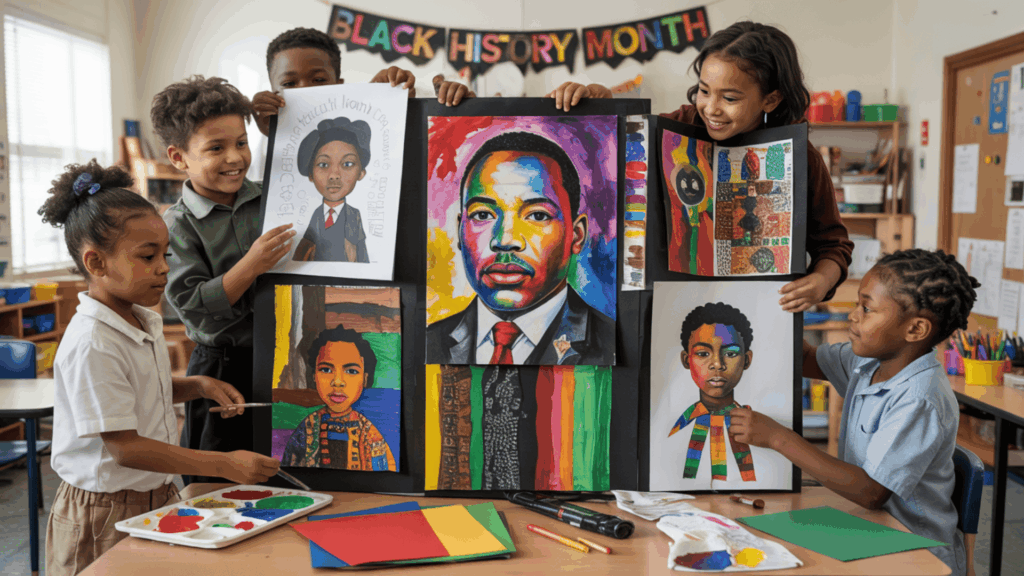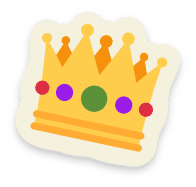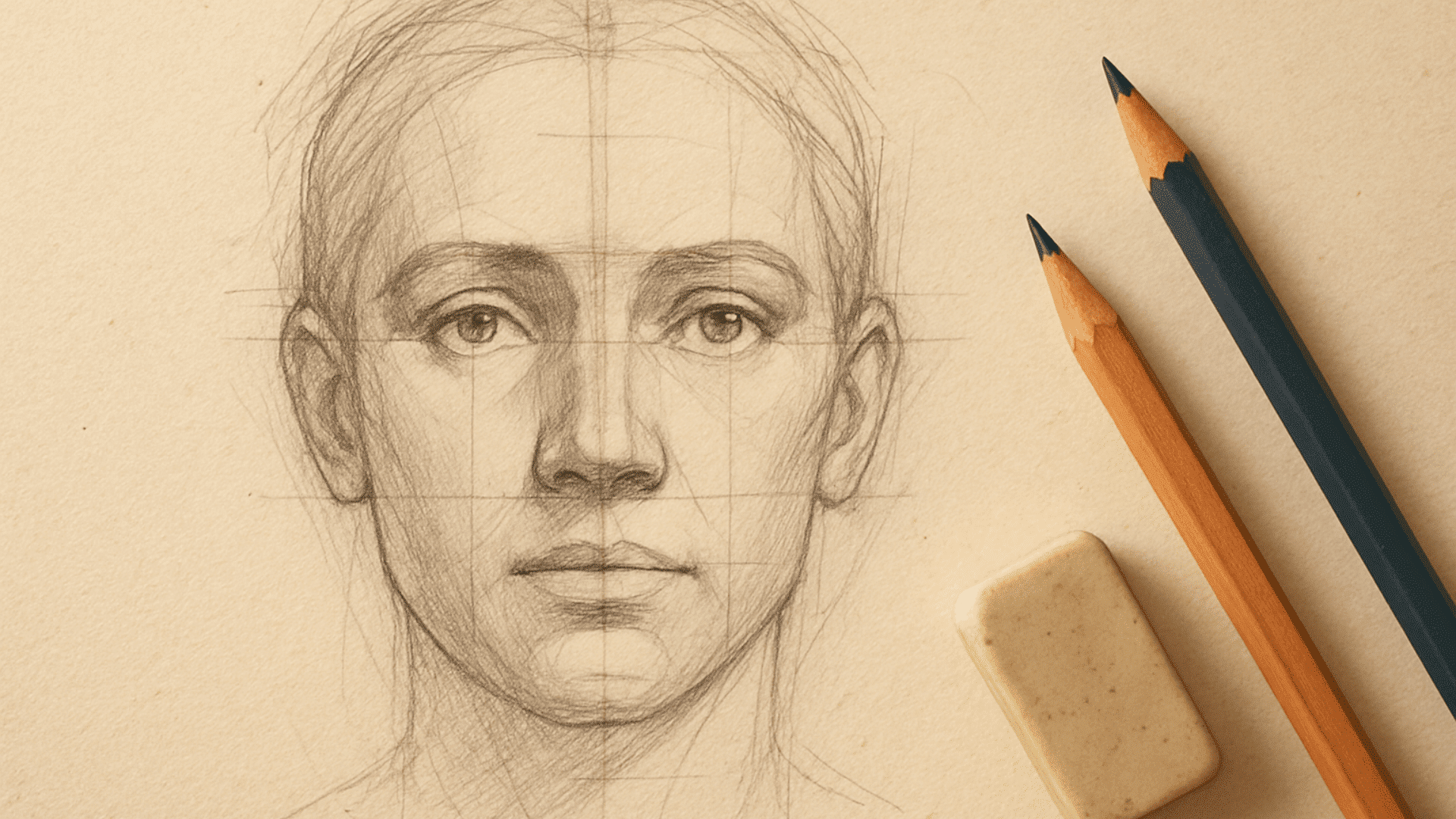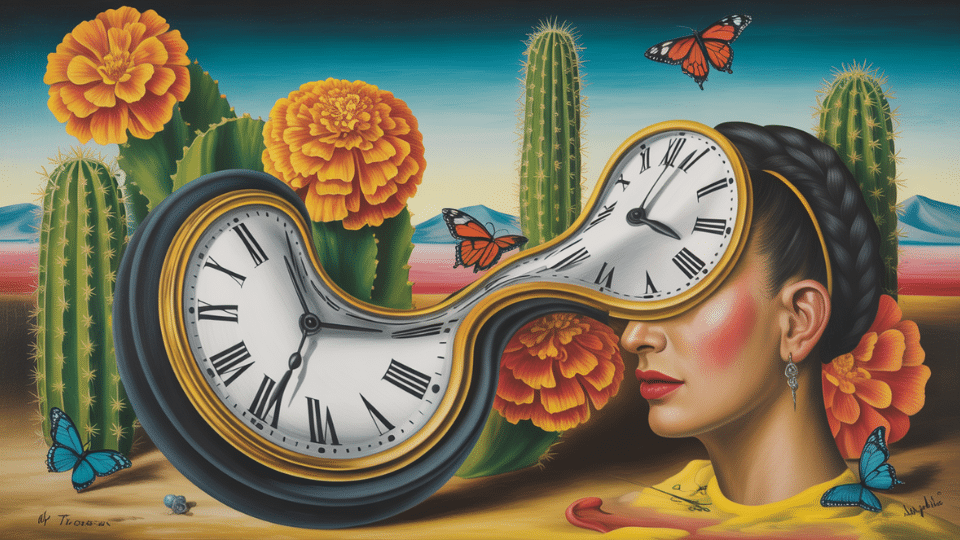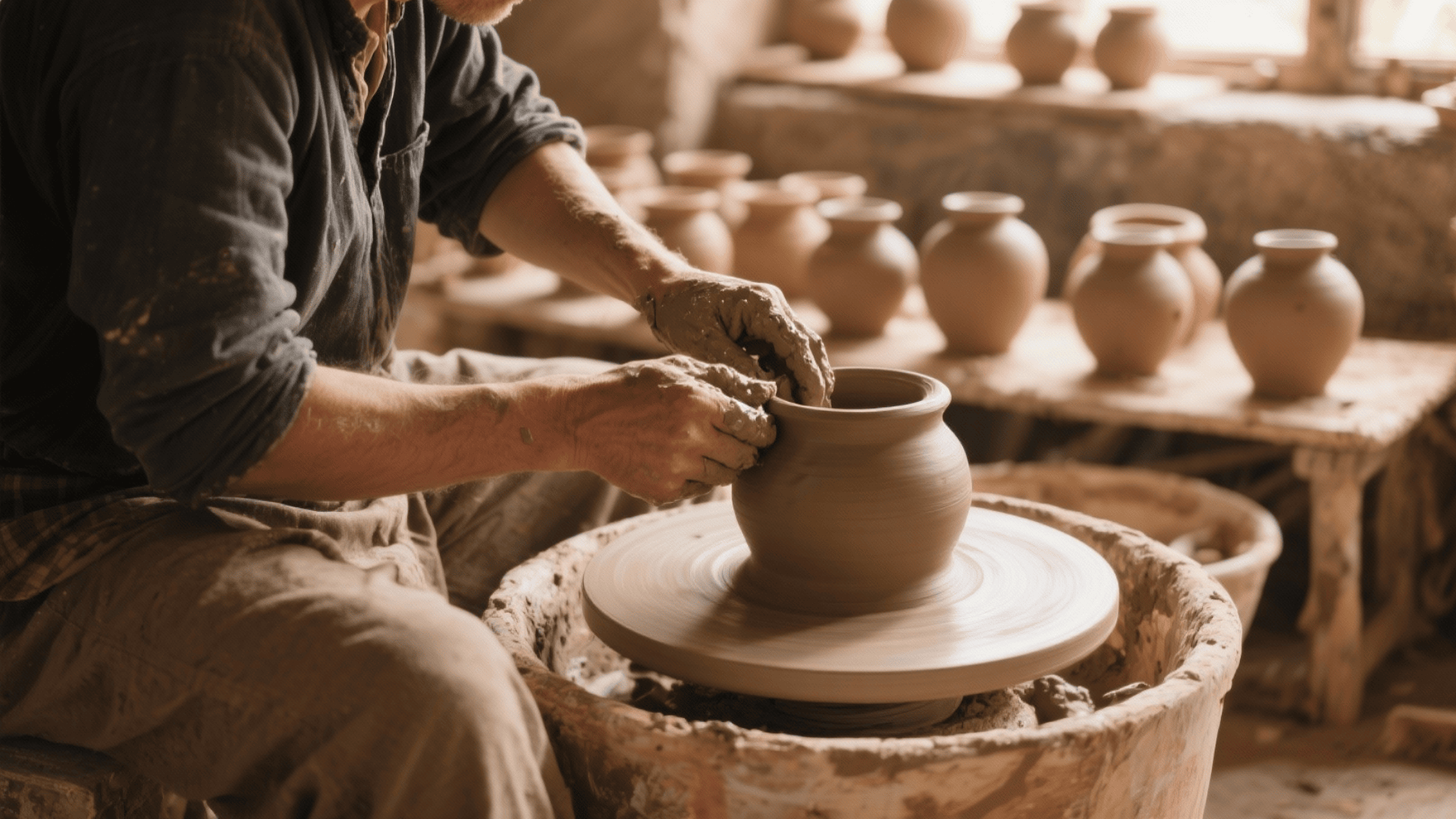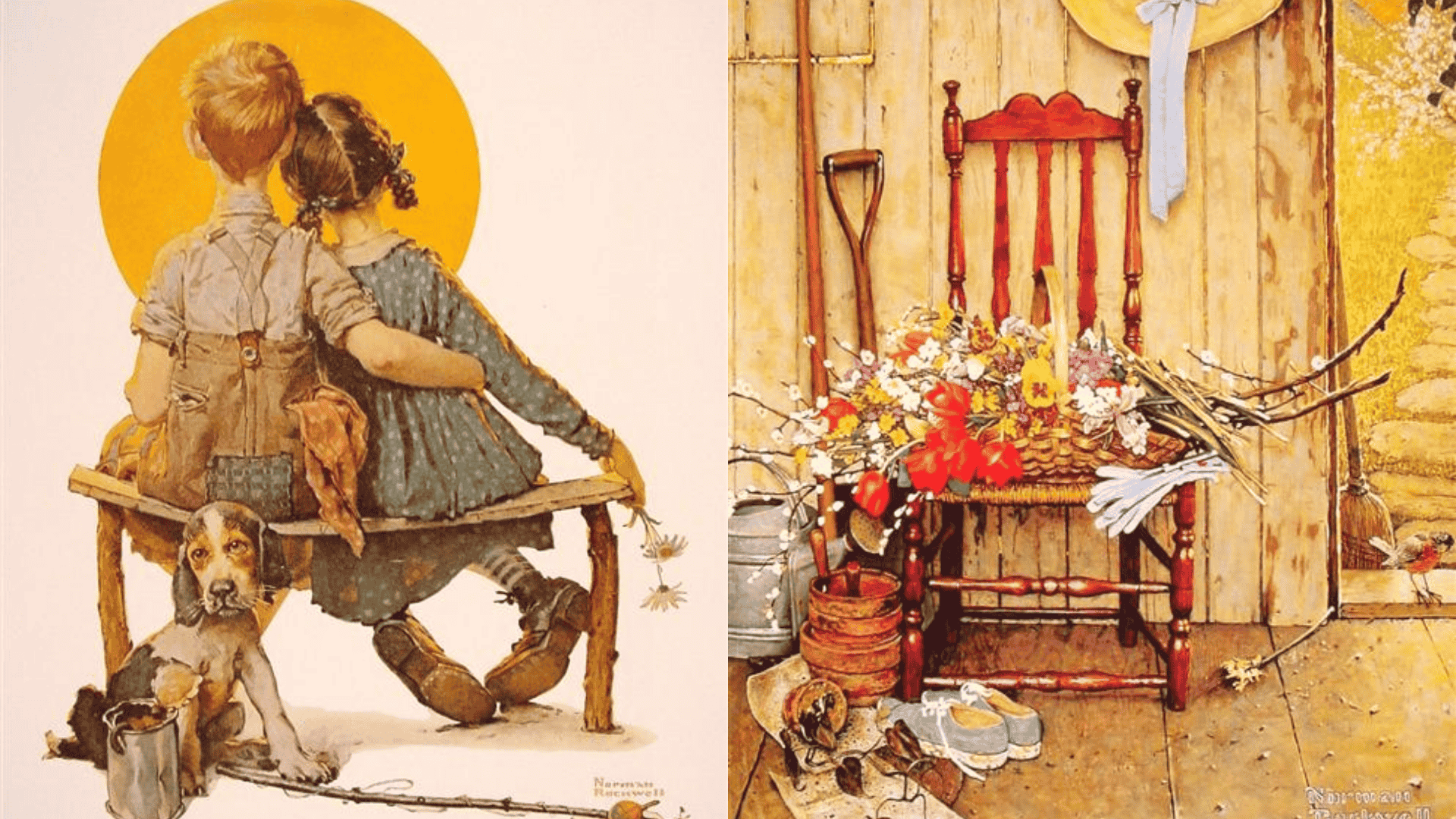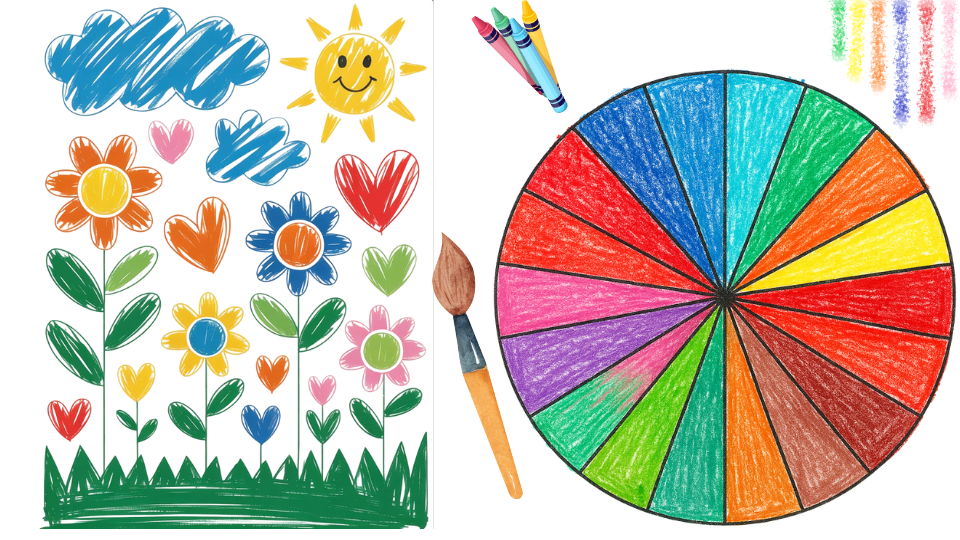Ready to make Black History Month come alive in your classroom?
Art projects help students connect with historical figures and events. creating art inspired by Black artists and history helps children learn facts and experience stories actively.
Did you know that Jean-Michel Basquiat started as a graffiti artist in New York City before becoming one of the most famous painters in the world? His colorful, energetic style is perfect for classroom projects!
From Faith Ringgold’s story quilts to Aaron Douglas’s silhouettes, there are many ways to blend creativity with learning.
Get ready to paint, create, and celebrate history like never before!
Why Education Matters for Black History Month Art?
Art education is essential for teaching Black history. Creating art or studying Black artists encourages more engagement than textbooks. Visual arts make complex topics easier and memorable.
Art projects enable students to explore pivotal moments, such as the Civil Rights Movement, and learn about influential figures like Jacob Lawrence and Augusta Savage.
Creating art fosters empathy and understanding of diverse perspectives. Black history should be recognized as an integral part of American history throughout the year, not just in February.
Art activities, such as storytelling, murals, or exploring cultural styles, foster inclusive classrooms, helping students value and learn from diverse cultures and their contributions.
Highlight Influential Black Artists & Art Styles as Inspiration
Learning about Black artists opens doors to amazing creativity and important history. These artists created powerful works that tell stories and inspire new generations.
| ARTIST | ART STYLE | CLASSROOM ACTIVITY |
|---|---|---|
| Faith Ringgold | Story Quilts | Create fabric collages that tell personal or historical stories |
| Jean-Michel Basquiat | Street Art/Neo-expressionism | Make bold, colorful paintings with words and symbols |
| Aaron Douglas | Harlem Renaissance | Design silhouette art with African-inspired patterns |
| Henry Ossawa Tanner | Realistic Painting | Paint scenes showing family connections and daily life |
These artists demonstrate various ways to convey ideas through art. Students can explore these styles while learning about the artists’ lives and the periods in which they lived.
Project Ideas for Different Age Groups
Hands-on art projects enable students to connect with Black history in a meaningful way. These activities are designed for individuals with varying skill levels and learning stages.
1. Elementary-Level (Grades K–3)
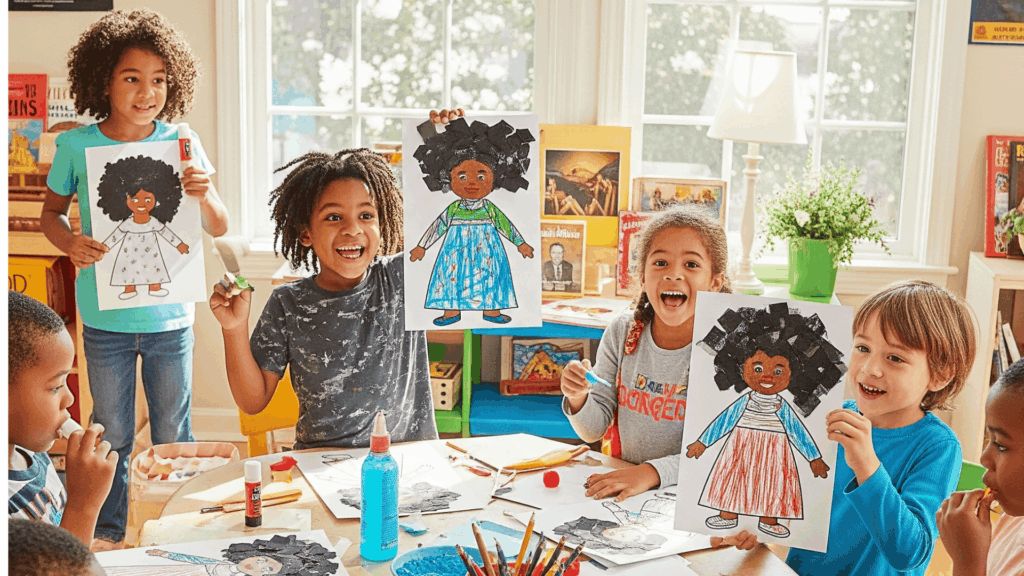
Create story quilt collages celebrating Black history figures. Try blow-painting for natural hair textures, or use coloring pages featuring MLK and Rosa Parks.
These simple projects build fine motor skills while introducing young learners to important historical figures. Students can share their artwork and tell stories about the people they chose to feature.
2. Upper Elementary to Middle School (Grades 4–8)
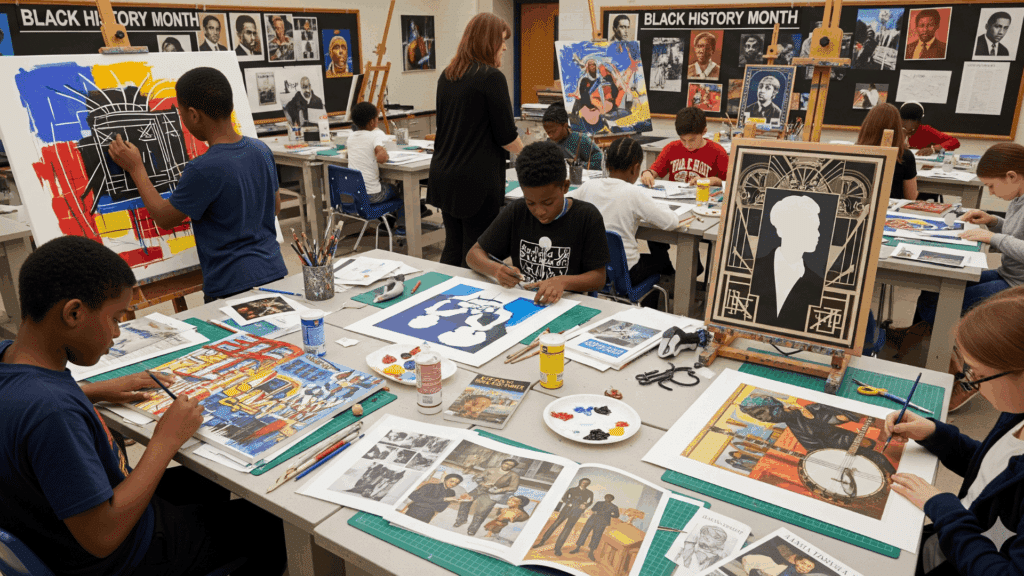
Make Basquiat-style graffiti canvases with bold expressions. Create paper silhouettes inspired by Aaron Douglas, or paint modern versions of “The Banjo Lesson.”
Older students can research the artists’ backgrounds and historical contexts as they create their pieces. These projects encourage personal expression and a deeper understanding of artistic movements.
3. Cross-Age Collaborative Murals
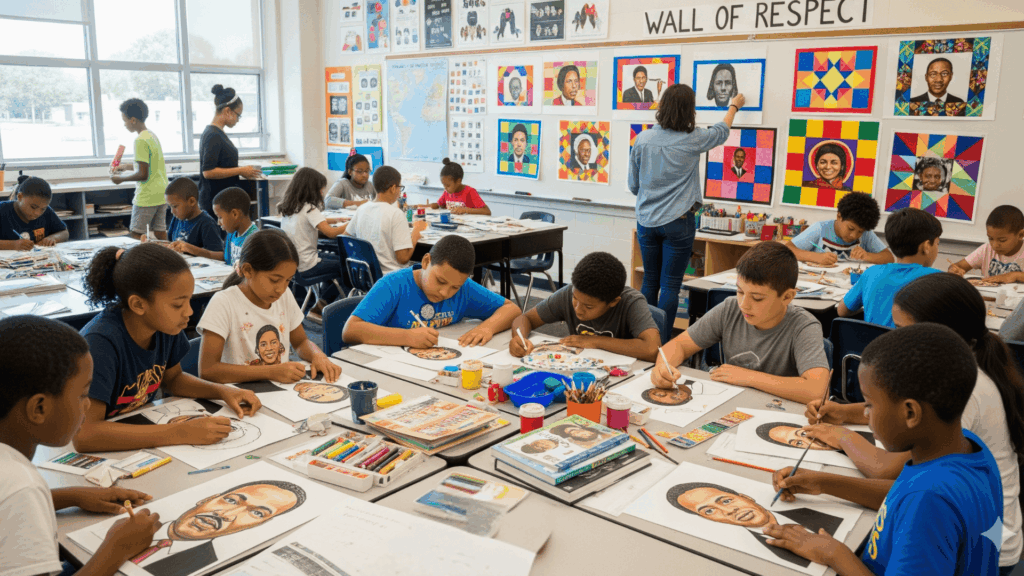
Build “Wall of Respect” murals featuring Black leaders. Students create individual quilt squares that combine into one large classroom display celebrating historical figures.
Collaborative projects teach teamwork and create lasting classroom displays that celebrate diversity. Students learn from each other while contributing to a shared artistic vision.
These projects encourage creativity while teaching important history. Students develop artistic skills and a deeper appreciation for Black culture and contributions.
Lesson Structure & Materials
Well-organized lessons help teachers deliver meaningful art education experiences. A clear structure ensures students understand both the artistic techniques and historical significance.
- Theme/Artist Overview: Introduce the featured artist with a paragraph explaining their life, work, and importance to Black history and American culture.
- Learning Objectives: Set clear goals like “Students will learn about Jean-Michel Basquiat’s style and create expressive urban art using his techniques.”
- Materials & Instructions: Provide complete supply lists (canvas paper, paint, markers) followed by numbered step-by-step directions for the art project.
- Reflection Activities: Include discussion prompts asking students how their artwork connects to history, personal identity, or creative self-expression.
- Assessment Ideas: Suggest ways to evaluate student understanding through artwork quality, participation, and ability to explain historical connections.
This structured approach helps teachers feel confident leading art lessons. Students benefit from clear expectations and meaningful connections between creativity and learning.
Cross-Curricular Integration Ideas
Art education becomes more powerful when connected to other subjects during Black History Month. These interdisciplinary approaches help students see connections between creativity, history, and learning.
1. Art and Social Studies
Create historical timelines through artistic expression, build portrait galleries of important figures, or design community maps showing significant locations in Black history.
Students research key events and create visual representations to bring history to life. These projects aid understanding of cause and effect and build artistic and research skills.
2. Art and Literature
Illustrate scenes from books by Black authors, create character portraits from historical narratives, or design story quilts that tell important tales.
Reading and artwork together as students visualize characters and settings from powerful stories. This combination helps improve reading comprehension while encouraging creative interpretation of literary themes.
3. Art and Science
Draw botanical illustrations inspired by George Washington Carver’s work, create geometric space art honoring Katherine Johnson, or design astronaut projects celebrating Mae Jemison.
Students learn scientific concepts while exploring the achievements of Black scientists and innovators. These activities demonstrate how creativity and scientific thinking often work in hand in hand.
4. Art and Music
Paint jazz-inspired abstract artwork, craft musical instruments from different cultures, or create visual patterns based on musical rhythms and beats.
Music and visual art share many elements, such as rhythm, pattern, and expression. Students can explore how different art forms influence each other throughout Black cultural history.
5. Art and Math
Use geometric patterns from African textiles, create data visualizations about historical achievements, or explore symmetry in cultural artwork and designs.
Mathematical concepts become more engaging when students see them in beautiful cultural art forms. These projects illustrate how mathematics is incorporated into art traditions from around the world.
These connections help students understand how creativity touches every area of learning. Interdisciplinary lessons make Black history more memorable and meaningful for all learners.
Year-Round Integration Tips
Black history shouldn’t be limited to just February. Making it part of your classroom throughout the year helps students understand that Black contributions are an integral part of everyday American history.
- Monthly Connections: Connect Women’s History Month in March to African American female artists, celebrate Jazz Appreciation Month in April with art projects, and use Arts Education Week in October to showcase diversity.
- Seasonal Themes: Connect fall harvest lessons to agricultural history, winter family themes to Faith Ringgold’s work, spring growth to Alma Thomas’ nature art, and summer freedom themes to Juneteenth.
- Daily Classroom Practices: Include Black artists in regular art history lessons, use diverse examples when teaching techniques, and build a classroom library of books about Black artists and their work.
- Timeline Displays: Create ongoing classroom displays showing African American art history throughout different time periods, adding new artists and movements as you study them.
- Teacher Growth: Attend workshops on culturally responsive teaching, follow Black artists on social media, visit museums with diverse collections, and take online courses about inclusive education.
- Community Connections: Establish pen pal relationships with local artists or art students, and invite community members to share their knowledge and experiences with your class.
This approach helps students see Black history as part of the bigger story of American culture and creativity.
Finishing Touches
Black History Month art projects create lasting memories beyond February.
When students create bold canvases inspired by Basquiat or story quilts like Faith Ringgold, they connect with tales of creativity and courage while understanding history through art.
From kindergarten finger painting to middle school murals, young artists meet amazing people who came before them, creating lasting connections that inspire long after the paint dries.
When art meets history, learning becomes unforgettable! What’s your favorite Black History Month art project? Share your success stories and ideas in the comments.

